Last updated: July 18, 2021
I’m a dentist. I’m not a dentist, but I’m a dentist.
This past weekend, I took a new-to-me course from the Postural Restoration Institute which places emphasis on the cranium (it has since been rebranded into Cervical Revolution.
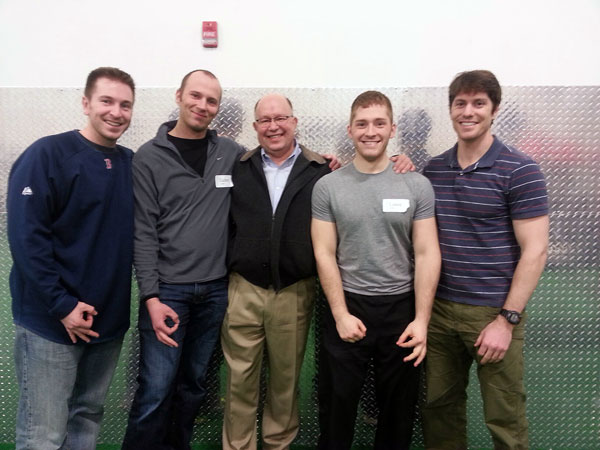
This was my first time meeting Ron Hruska, the founder of the Institute, and I have to say my expectations were met and exceeded. My guess is my right arm looks so unnatural because I was still starstruck.
Some Background
A while back I was having lunch with my good friend Eric Oetter. The topic: “How do you convince people who’ve spent their lives learning to do things a certain way that they need to change their entire framework?”
In an effort to network with Ron, I emailed him this very question. He never got back to me – assumedly the smartest homo sapien on Earth must be busy – and I started to wonder how he would answer that question.
I have experience teaching undergraduates functional anatomy, biomechanics, human physiology, physics, statistics, and chemistry. I’m currently assistant faculty for a Structural Kinesiology class at my alma mater. As I’ve been getting paid to help other students learn for almost three years now, this has been my biggest internal struggle.
Why don’t you want to learn like I want to learn? Why isn’t this interesting to you? Why won’t you ask more questions? Why do you care so much about your grades? I don’t even care if you’re wrong, I just want you to try a little harder. My current solution is to give more attention to those who want to know and will listen because it seems like what I have to say is just a burden to the rest.
Though to be fair, everyone gets a little extra Lance weirdness because that keeps me interested in what I do.
Now that I’ve met Ron, my guess is that he didn’t have an answer for me. For him, there is a surplus of people who care enough about what he says that they will seek out his instruction. He doesn’t have to worry about aiming to the masses.
From an educator’s point of view, I appreciate the analogies all PRI instructors make. And Ron is king of analogies. I will attempt to do them justice.

The Temporo-Mandibular-Cervical Chain (TMCC)
Myokinematic Restoration explains the lower extremities. Postural Respiration explains the upper extremities. And Cervical-Cranio-Mandibular Restoration slaps on the head.
PRI-defined muscle chains are in the context of gait, as evidenced by the fact that we want patients to become neutral, then reciprocal, then alternating. So I will refer to the head chain as the TMCC from now on.
Facial Observations and Coffee
There are ways to recognize the TMCC pattern without orthopedic tests outlined in the manual.
- Big right cheek and eye socket
- More visible, flared left ear
- Right temporal indentation
- More open right nostril
- Increased distance between the side of the face and the lateral ocular angle on the right
- Elevated right eyebrow
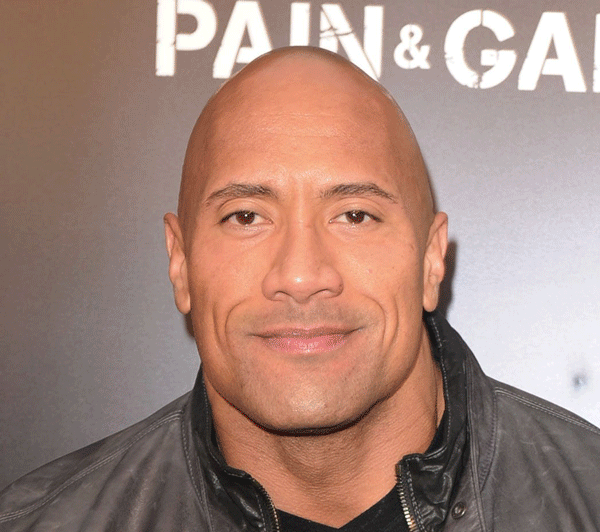
Take, for example, the right temporal indentation. The right side of the face is going to look flat if this particular asymmetry is present. Ron likes coffee, and if Ron wants some coffee, he’s going down the right side of the face to get it. It’s just quicker that way.
Take home: facial asymmetry is another way to recognize the pattern and is the first part of your assessment as soon as they walk through the door.
Find a Dentist Who Respects an Airway
There was a lot of talk about teeth in this course, and rightfully so since they’re such a powerful reference center. When a dentist only respects how straight the teeth are, they neglect autonomics. Wearing braces, especially before age 12, splints the cranium and doesn’t allow growth and movement (or wobble… but we’ll get to that later).
“High palates are extended palates.”
There were a few slides of kids who had braces. The therapist instructs, “Have your dentist take those off or I will not work with your child.” And they need to come off, because PRI will fail over and over again if you neglect airway management. So the parents have the dentist take off the braces, then treatment can occur without restricting the sphenoid (a.k.a. the base of the skull).
“Inhalers in an exhalation position put you in extension and autonomic discord. That is forward head posture.”
Also worth mentioning are Ear-Nose-Throat surgeons. If you don’t have an airway, compensate with a forward head posture, then get surgery to open your airway, you just put yourself in that forward head posture for life.
Take home: if you can’t maintain a ZOA, you can’t manage an airway. And vice versa.
The Three S Bones
Sacrum, sternum, and sphenoid; if you skip these, you’ll never inhibit. These three S bones are the centerpieces that need to be positioned correctly. The three balls of a snowman. Just the sphenoid alone articulates with twelve other bones! Also known as The Collaborator, it’s the only bone that knows what every bone in the body is doing.
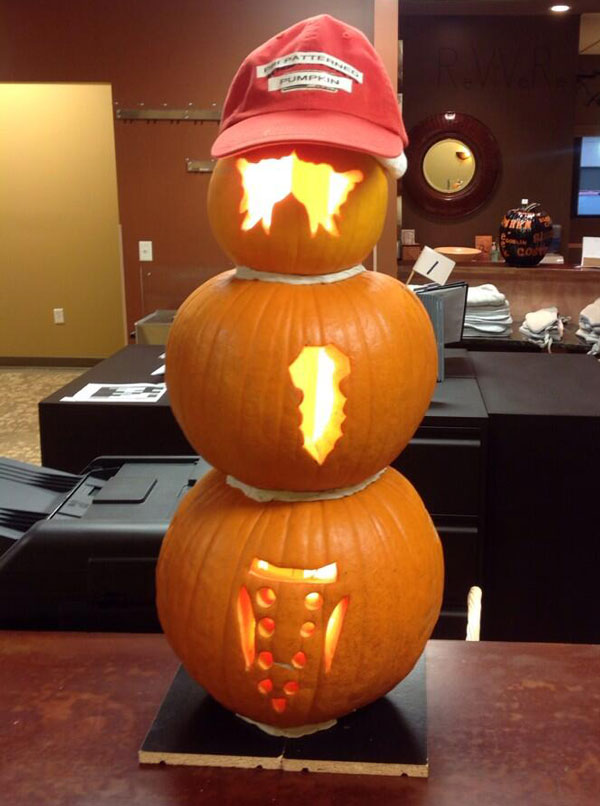
The easiest way to learn the different chains is to recognize that these places of the body look eerily similar. The left innominate of the pelvis looks just like the left temporal bone: flexed, anteriorly rotated, and externally rotated. They’re both stuck in inhalation.
This was monumental in helping me picture temporal bone movement and recognizing the TMCC pattern.
The long head of right triceps brachii is a left hamstring (sagittal plane).
Temporal bones are pelvic innominates.
Temporalis is a gluteus medius.
The ear canal is just another airway to manage.
The palate is another diaphragm.
“Whenever I see a hip flexor walk into a room, I say, ‘Oh my God, look at that sternocleidomastoid.’”
Take away: look for the similarities.
Sternocleidomastoid as a Respiratory Muscle
Some people are calling SCM a primary muscle of respiration these days. Ron disagrees. I disagree. It should work for inspiration when the head is turned.
Take away: just because dysfunction is heavily prevalent doesn’t make it okay.
Upper Trapezius is Not Connected to The Shoulder
It’s funny that this is still a thing, but the strands of trapezius above C7 connect to the clavicle and do not directly attach to the scapula (Johnson et al., 1994).
Take away: don’t assume things are true just because you thought they were true yesterday.
Protruding the Mandible is Retruding the Cranium, Except Not
A forward head is a protruded cranium, which puts the mandible in relative retrusion. This could create a functional type II malocclusion (an overbite where the top teeth are more anterior than the bottom teeth).
So if I push my jaw forward all day, I’ll fix my forward head position? Not quite. The more proximal a bone is, the more its position matters.
Take away: respect the fossa because it will determine what the extremity does.
The Lateral Pterygoid
Consider the left lateral pterygoid as a muscle that moves the cranium to the left, not a muscle that moves the jaw to the right. This is huge in repositioning the sphenoid.
Consider the left lateral pterygoid as a muscle that internally rotates the left temporal bone, which is stuck in a position of ER, flexion, anterior rotation, and inspiration as you remember from above.
Consider the left lateral pterygoid as a muscle that internally rotates the sphenoid, which is stuck in a position of ER.
Take away: don’t assume an insertion always moves on an origin. They’re all attachments that can be fixed or moved. And the left lateral pterygoid is hugely important for fixing staying out of a right TMCC pattern.
Teeth Grinding
Teeth grinding, also known as bruxism, is really just a cranium searching for a reference point at night. Wearing clean shoes that give your calcanei frontal plane stability can keep you from grinding. That forward head position is trying to get you an airway you don’t have.
Take away: respect an airway and you won’t have to grind your teeth at night.
If You Want to be Bob Ross, You Want the Tympanic Membrane to Relax
90% of people experience dizziness. The trigeminal nerve is owned by the temporal bones.
The Bob Ross reference represents control of the frontal plane and maintenance of neutrality. If you can maintain neutrality, you have the mental capacity to create like Lady Gaga and Bob Ross. If you don’t have the frontal plane, you’ll be experiencing things like ringing ears, dizziness, and POTS.
“I hate when people get excited about arms turning. You missed it. I get sentimental about it. I hate that.”
Get the tensor tympani and the tensor veli palatini to relax, and the ear can work. “That’s autonomics.”
“The cranium loves Bob Ross. They cranium loves reaching.”
Take away: learn more about the trigeminal nerve because it controls your auditory and vestibular systems.
Movement of the Skull
The sutures may ossify, but the cranium still moves.
Take away: consider bone movement instead of joint movement.
OA Extension vs. Hyperextension
These two movements are mostly in the same direction, but have greatly differing effects. Normal occiput on atlas extension pushes the occiput anteriorly flexes the sphenoid. Too much extension puts the sphenoid in extension as well.
Too much extension uses the brain stem as a ligament to check that motion.
“People want forward head posture because that’s the only reference they know for how to breathe.”
Take away: OA extension is normal, but stop crushing the brain stem.
Wobble Baby Wobble Baby Wobble Baby
Inspiration is:
- Sphenoidal flexion
- OA extension
- Anterior rotation of the pelvic innominates
- ER of the temporals
Expiration is the opposite. In the right TMCC pattern, the left is in inhalation, the right in exhalation.
Think about the position of the right temporal bone and the right sternocleidomastoid. This muscle pulls the temporal bone right into that exhaled position.
The temporal bones are regulators: of tension, decisions, processes, and autonomics. If I have a forward head posture, I don’t have temporal wobble. “Wobble” represents the ability to move in to and out of inhalation and exhalation.
“He doesn’t have attention deficit. He can’t move.”
If you don’t have temporals with wobble, you don’t have Bob Ross. If you are clenching your teeth, you don’t have wobble. If you can’t occlude (say you have an anterior open bite), you will clench, especially at night as you search for a reference center. Overusers (of shoes, alcohol, glasses/contacts) can’t have fun because they don’t have wobble. They are the type A personality. “I can’t wait to see the day you succeed at failing [to get extension].”
Reaching and exhaling is important for those who cannot relinquish control. Reaching is putting yourself out there. So is exhaling.
Take away: anything that helps temporal movement is fun. Don’t take my party away.
The Molding of Minds
I feel bad for Ron: CCMR is his baby, and it’s not a very busy course (they only put on four of them a year). In fact, it’s about to become two courses because it’s so dense. I can’t wait to take the next one.
Teachers should be paid as much as doctors, but it should be very difficult to become a teacher.
Ron, as well as the other PRI presenters, are phenomenal teachers. They use your name (thank you, name tags). They incorporate Lady Gaga into cranial anatomy. They say things like, “Girl, your ganglia are hot.” As Ron said, “I’m not trying to be funny, I’m just trying to help your remember these things. Does that help?”
I respect this more than anything else. They’re not just masters of their craft, they’re masters of the teaching craft as well. And asking if it’s working is a way of obtaining continuous feedback, which is important since we know that not every audience is the same.
Take away: if you’re going to teach, it is a privilege. Don’t screw up.
I’m a Psychologist. I’m Not a Psychologist.
If the skeletal/muscular system isn’t neutral, the nervous system isn’t neutral. There’s an entire page, written in what appears to be 6pt serif font, dedicated to outlining the right TMCC. This isn’t just the right TMCC page, though: it’s also the biobehavioral page.
“Runners aren’t on a high, they’re off the ground.”
“Mouth breathers are floor addicts. [They’re always looking down.]”
Ron talked about his grandson a little in this regard. “He can whistle. He has abs. He doesn’t get worried about failing a test. He can seal the deal. He is Bob Ross.”
As Ron said, the first thing he does is get a patient talking. “If you can’t communicate and interact, you can’t wobble.”
Take away: treat the system as a system. No piece is insignificant.
The Bregma is the God Bone
I cannot convey what happened in the room when Ron first showed us the new manual technique from this course. Suffice to say it was like voodoo. Anything that gives you 16mm of mandibular opening in a few seconds is voodoo. Except it’s not; it’s science.
Favorite Ron quote of the weekend: “Welcome to my world. I am out there alone and I would like some friends.”
If you want to treat the lats, the bregma has to come down. Tongues on the roof of mouths shut off lats.
Take away: manage the bregma. Everything is related. Ron is hilarious in a serious way.
The Most Important Orthodontic Appliance You Have
Did you know the tongue is made up of sixteen different muscles? The genioglossus, hyoglossus, and styloglossus are the muscles that control where the tongue goes, so we focus on those.
“I’m an orthodontist. I don’t move teeth, but I move teeth.”
If the mouth is small, the tongue works hard. It even hypertrophies, and you’ll be able to see teeth marks on the sides of the tongue where they push together. If your tongue works asymmetrically as you grow up, it can produce unequal growth of your teeth. “Teeth are passengers on a bus.” On that same note, kids need to be in more flexion.
There a whole page in the manual with recommendations on what to do with your tongue when you’re stuck in a right TMCC pattern. I’m not going to give away the farm, but here are two of my favorites:
- Always try to keep your tongue off your lower teeth at rest.
- Open your mouth and stick out your tongue while looking in a mirror to make sure it doesn’t deviate to one side. Hold, relax, and repeat several times a day.
The picture below is for the ladies.
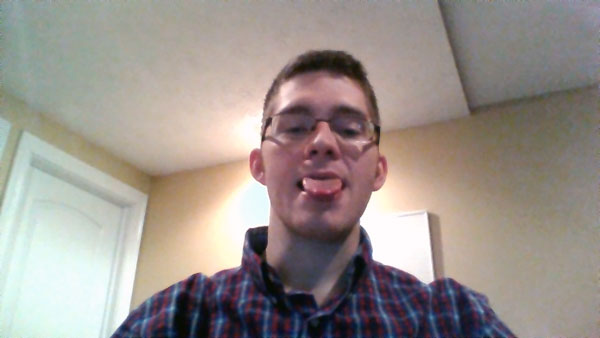
Take away: the tongue is the best appliance you have.
TMJ Proprioceptive Occlusal Splints
Flat plane splints are used to help “free up” the bite as the neck is stabilized with a program. They are great for those clients who don’t touch all of their teeth at the same time and those who clench at night to find a reference center.
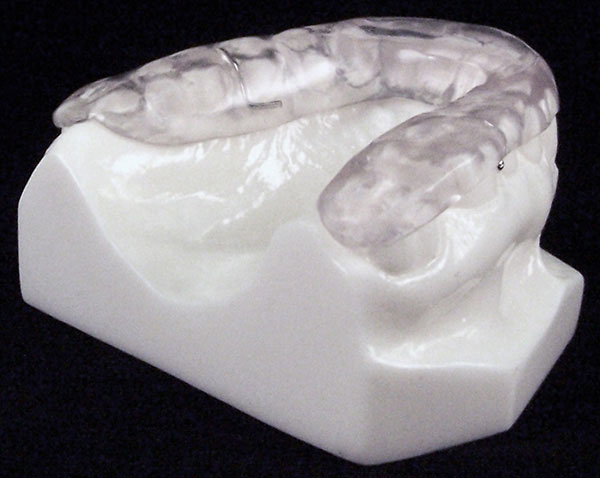
As I’ve had trouble getting and staying neutral, I am thinking one of these might be useful for me since my teeth don’t touch at the same time when I bite down and I couldn’t even bring my front teeth together if I tried.

I believe this is technically an anterior open bite, but I’m still unsure on what the classification criteria is.
Take away: if you can’t get someone to stay neutral, a flat plane occlusal splint may be in their future.
When do You Need to Refer to a Dentist?
- They can’t get molar to molar contact (they need a splint)
- There’s a clicking or popping when opening the mouth (they are sliding off the disc in the temporomandibular joint)
- They have a really open bite (not just bad malocclusion)
- They are a right torsion pattern, which is something we aren’t going into
Take away: know when to refer out.
Exercise Coaching
We use the handouts from the Non-Manual Techniques CDs at IFAST a lot. One thing Ron said that really hit home was that “if they have to see the exercise, you’ve lost them.” I will show people the exercise because it feels quicker and more practical in our semi-private setting, but I now realize how this is less than optimal.
It’s like letting them rely on their visual system. If I can have them listen, comprehend, and replicate the position on their own body, they will get a lot more out of it. Then they can refer to the handout when I’m not there. Make them discover themselves.
“You say the word ‘ab’ and they say the word ‘cookie’. They don’t know what you’re talking about.”
Take away: make your clients do what they aren’t comfortable doing. Utilize the whole brain.
Understanding Pathology
“I don’t do it for you guys. I put patterns together so that I can understand when I have pathology.”
As a basic example, if I have someone who’s stuck in a left anterior interior chain pattern, they can’t adduct their left leg and shouldn’t be able to extend it either. If they can extend it, we know they’ve created pathology in the front of their left hip.
As an example from this course, if they are a right TMCC they should not be able to move their mandible to the right. If they can, there’s hypermobility in the TMJ.
Remember, asymmetry is normal. It allows us to move. “There’s a group of people in Russia right now who are doing everything they can to be more asymmetrical.”
Take away: know when something isn’t normal.
The Levator is Rodney Dangerfield
Levator scapula gets no respect. You need the levator to swallow.
Here’s an article by PRI instructor Mike Cantrell that talks about the levator.
Take away: respect the levator.
Summary
This course is dense. I’ve only had time to go over my notes and what we talked about so far, and there’s at least double that still left uncovered in the manual.
I cannot recommend this course highly enough. This course is worth taking and I’m glad I did.
If you want to read more, be sure to check out my man Zac Cupples who was there with me.
Happy autonomics. Happy Bob Ross.
P.S. If you want to make sure you get all the info I don’t put up on the blog, be sure to sign up for the mailing list.
Johnson, G., Bogduk, N., Nowitzke, A., & House, D. (1994). Anatomy and actions of the trapezius muscle. Clinical Biomechanics, 9(1), 44–50. doi:10.1016/0268-0033(94)90057-4
Awesome. I am going to re read this so I can absorb all this greatness.
Lance, this is awesome. Thanks for the detail. Definitely re-reading it like…18 times. #Pfffttttt
Wow. That’s all. Well done!